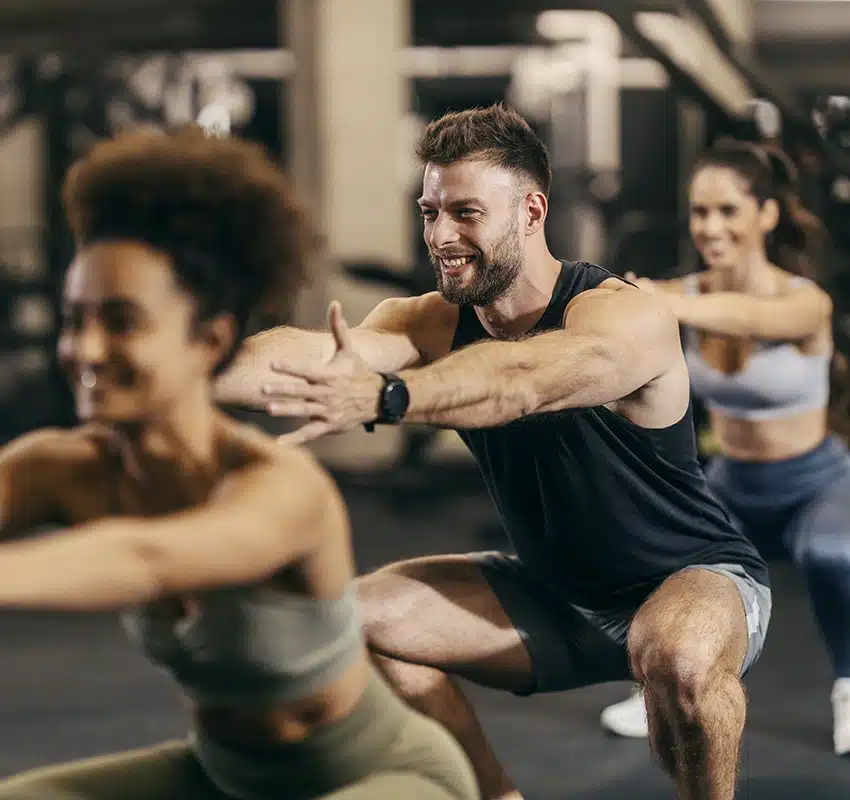Best Gym Advertisement Examples
In today’s competitive fitness industry, the right gym advertisement can be the key to standing out and attracting new members. From boutique studios to large health clubs, fitness businesses must create ads that showcase their unique value, build trust, and inspire action. This guide highlights powerful gym marketing strategies and real-world examples to help you connect with your audience and grow your fitness community.
Key Takeaways
- Effective fitness gym ads and social media promotions can increase brand loyalty, attract potential members, and build stronger community engagement within your fitness space.
- Fitness ads using authentic video ads, user-generated content, and influencer marketing consistently outperform generic campaigns.
- A well-planned marketing strategy across social media platforms, search ads, and local advertising campaigns helps fitness businesses stay top-of-mind in a competitive market.
Understanding Fitness Center Advertising
Fitness center advertising is a crucial driver of success for gyms and health clubs. It refers to all paid promotional efforts, whether through digital platforms, traditional media, or local outreach, designed to attract new members and boost visibility. Unlike broader marketing strategies, which may include referral programs, content creation, and community engagement, advertising focuses on paid campaigns that deliver immediate attention and measurable results.
It’s important to distinguish between advertising and marketing. Marketing covers a wide range of activities, from influencer partnerships to brand-building initiatives, while advertising centers on targeted, paid placements that directly capture an audience’s interest.
Today, successful gym advertising goes beyond generic promotions; it’s about storytelling and authenticity. Ads that highlight member fitness journeys, showcase user-generated content, or share relatable experiences resonate more strongly with audiences. By combining digital channels with traditional methods like print ads, gyms can build a well-rounded advertising strategy that not only drives short-term memberships but also strengthens long-term brand identity.
Multi-Channel Gym Advertising Strategies
The most effective gym advertising happens when multiple channels work together. Gyms that rely on just one method, such as only running social media ads, might generate quick attention but rarely achieve sustainable growth. Leading brands like Gold’s Gym, Planet Fitness, and Crunch Fitness succeed because they combine social, search, video, and local campaigns into cohesive strategies that reinforce their brand across every touchpoint.
A strong advertising campaign typically follows a clear path: paid ads create brand awareness, awareness drives engagement, engagement generates qualified leads, and leads convert into memberships. This cycle fuels consistent revenue growth while strengthening a gym’s role in the local community.
Today’s advertising landscape offers many opportunities for fitness businesses. Social media ads help gyms connect with audiences through personalized content, search ads capture high-intent prospects searching “fitness center near me,” and video ads showcase the energy and atmosphere of workouts. Influencer partnerships add authenticity, while paid digital campaigns expand overall reach.
The most effective strategies focus on consistent, multi-channel messaging. Whether through social ads, influencer collaborations, or local outreach, unified campaigns reinforce the gym’s mission and keep it top of mind in a competitive market.
Why Advertising Matters in the Fitness Industry
The fitness industry is highly competitive, with thousands of gyms, health clubs, and studios competing for attention. Large brands like LA Fitness, Blink Fitness, Anytime Fitness, and Orangetheory Fitness dominate national campaigns with huge budgets, making it difficult for smaller gyms to compete. For independent gym owners, effective advertising is the leverage needed to stand out and connect with the right audience.
Advertising is also vital because fitness demand rises and falls with the seasons. New Year’s resolutions often bring a surge in sign-ups, while summer months can lead to declining interest. Strategic campaigns, such as ‘Summer Shape-Up Challenges’ or ‘Back-to-Fitness’ promos, keep your gym visible year-round and prevent competitors from capturing your audience during slow periods.
Beyond seasonal cycles, gyms now face competition from digital fitness apps and online programs. While these offer convenience, they lack the personal coaching, community support, and sense of belonging that physical gyms provide. Effective advertising should highlight these unique benefits, showcasing real member stories, community events, and the mental well-being that comes with being part of a fitness space. In this way, advertising positions your gym as more than a workout facility; it becomes a trusted hub for health and wellness.
Strong advertising also communicates what makes a gym different. Crunch Fitness leans into inclusivity and fun, Gold’s Gym emphasizes its strength training heritage, and Planet Fitness highlights its judgment-free environment. Smaller gyms can follow the same principle by showcasing their niche, whether it’s personal training expertise, fitness challenges, or specialized programs. By clearly promoting their unique value, even local gyms can build brand loyalty and thrive in today’s crowded fitness industry.
Step-by-Step Guide to Creating Successful Fitness Center Advertising Campaigns
Launching effective advertising for a fitness center isn’t just about running a few ads; it’s about creating a structured plan that connects with the right audience, delivers a strong message, and drives measurable results. By breaking the process into clear steps, gym owners and marketers can design campaigns that not only attract new members but also mirror the strategies behind some of the most successful gym advertisements in the industry.
Define Your Target Audience and Goals
Behind every memorable gym ad is a clear understanding of the audience it’s speaking to. Without this foundation, even the most creative campaigns risk falling flat. For instance, Planet Fitness successfully targets casual gym-goers with its “Judgment Free Zone” message, while Gold’s Gym appeals to serious athletes by emphasizing strength and legacy.
Start by analyzing your current members to spot patterns in demographics, fitness goals, and challenges. Millennials may be drawn to mobile-friendly workout tracking, Gen X might prefer family-oriented clubs, and baby boomers often prioritize long-term wellness and mental health.
To sharpen your strategy, create detailed member personas that go beyond age and income. Include fitness experience, lifestyle habits, and personal growth objectives.
Finally, set measurable goals that align with your brand identity. For example, you might aim to add 50 new members in the first quarter, increase personal training sales by 25%, or grow awareness in your local community by 30%. These benchmarks will help you track success just like top gym chains do when scaling their national campaigns.
Develop Your Advertising Strategy and Creative Assets
Once you know who you’re targeting, the next step is building an advertising strategy that reaches them in the right places with the right message. Successful gyms don’t rely on a single channel; they choose platforms that fit their audience. For instance, Orangetheory Fitness leverages social media to showcase the energy of its group workouts through Instagram Reels and Facebook Ads, while Gold’s Gym has historically dominated with bold, motivational imagery in both print and digital ads, appealing to serious fitness enthusiasts.
Creativity is what makes these ads memorable. Instead of focusing only on discounts or equipment, highlight the complete fitness journey, community, support, and transformation. Many local gyms do this effectively by sharing authentic transformation stories that build trust and resonate with potential customers.
Visual storytelling is critical. Professional-quality video ads, transformation stories, and even simple but authentic fitness club advertising campaigns often perform far better than stock images or generic promotions.
Strong ad copy is equally important. Instead of generic lines, use messaging that speaks to your gym’s mission and values. For example, a fitness studio might emphasize personal growth and mental well-being, while a large health club might focus on the variety of fitness challenges and exclusive gear available to members. Highlighting your unique selling proposition ensures that your fitness ad campaign stands out in a competitive market.
Launch, Monitor, and Optimize Your Campaigns
Launching a fitness ad campaign isn’t about spending the biggest budget; it’s about spending smart. Many gyms start with $500 to $1,000 per month to test different ads before scaling up. For example, Anytime Fitness has run local ad campaigns where small budgets were allocated to trial offers, proving that even modest spends can attract steady new sign-ups when tracked properly.
Measurement is key. Successful gyms track metrics like cost per lead, conversion rates, and return on ad spend (ROAS). A healthy benchmark is a 3:1 ROAS; every dollar spent generates three dollars back. Boutique gyms often achieve this by running targeted Facebook and Instagram ads that highlight free classes or 7-day trials, converting curious prospects into loyal members.
Ongoing testing keeps campaigns fresh. Crunch Fitness, for example, often experiments with playful ad copy and bold visuals. A/B testing headlines like “Join the Fun Today” versus “Your First Class is Free” helps identify which message resonates most with their community.
Retargeting is a proven winner. Many prospects need multiple touches before committing. Gyms like Orangetheory Fitness use retargeting ads to reconnect with people who visited their website or engaged with social media videos. This gentle reminder keeps the brand top-of-mind and often leads to higher conversions than first-touch campaigns.
Over time, continuous optimization turns advertising into a predictable growth engine. The best gyms don’t just launch campaigns; they monitor, adjust, and refine them until the ads consistently deliver new memberships and stronger community engagement.
Common Fitness Center Advertising Mistakes to Avoid
Even well-intentioned gym marketing ideas can fall short if executed poorly. Many fitness businesses make avoidable mistakes that waste advertising spend and weaken brand recognition.
One of the biggest mistakes is targeting too broad an audience. Gym owners often try to appeal to everyone, but this leads to vague ads that don’t connect with anyone. Instead, campaigns work best when they speak directly to specific groups. For example, Orangetheory Fitness successfully targets busy professionals by highlighting short, effective workouts that deliver results in under an hour, proving that niche messaging is far more powerful than broad appeals.
Poor mobile optimization is another costly mistake. With most social and search ads being viewed on smartphones, gyms must ensure their landing pages load fast and sign-up forms are simple. Without this, potential members leave before ever experiencing your brand.
Finally, many gyms fail to leverage social proof. Testimonials, member transformation stories, and real-time class highlights build credibility far better than polished studio photos. Equinox, for instance, often blends influencer partnerships with real member stories, reinforcing its image as both aspirational and authentic. Without these social elements, even the most creative campaigns risk feeling flat and disconnected.
Summary
In today’s competitive fitness industry, advertising isn’t optional; it’s essential. The best gym ads do more than promote memberships; they showcase authentic journeys, community spirit, and a unique brand identity. Campaigns that leverage video ads, social media, and user-generated content consistently stand out by making fitness feel personal and inspiring.
Successful gyms go beyond discounts, focusing instead on creating lasting experiences that build loyalty. By investing smartly, tracking results, and optimizing strategies, fitness centers can turn their advertising into a true growth engine, attracting new members, strengthening community ties, and staying top-of-mind in a crowded market.









